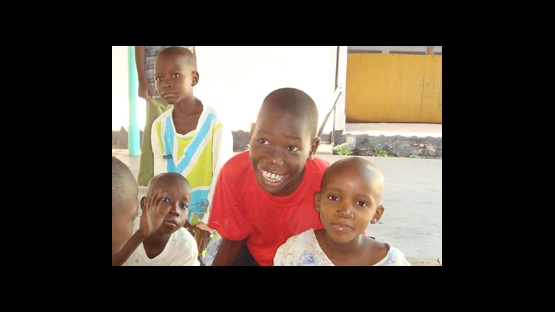A child's chance of surviving cancer has vastly improved in the past 50 years through advances in medicine and as a result of effective collaboration among researchers working to fight the disease. Fortunately, cancer in young people occurs less frequently than in adults and its form is biologically very different from cancer in adults. Children are not "small adults". The types of cancer that are seen in children are largely different from those seen in adults. Many of these cancers respond well to treatment and a large number of patients can be cured.
Sadly, the vast majority of children with cancer live in countries that can call upon far fewer resources than are available in high-income countries. In richer countries, 80% of the children with cancer survive. Much less than half that number, or only about 30-40% of the children that contract the disease in lower-income settings will defeat it. The discrepancy in outcomes is not entirely dictated by income or spending on health care. Reduced survival rates are also the result of challenges such as late diagnosis, low referral rates, variation in practice. Even in low-resource settings and despite income differences, increased survival rates can be achieved, if the health care system focuses on ensuring early diagnosis and referral, adequate treatment facilities and social services that would address the problem of treatment abandonment.
The rapid progress in improving children's cancer survival rates results from collaboration between paediatric cancer specialists nationally and internationally, who implement clinical trials in these individually rare diseases. In June 2013, a meeting of international specialists in paediatric radiotherapy gathered at the IAEA in Vienna. Experts from developed and developing countries pooled their knowledge and experience to support a project to identify the minimal requirements for quality in delivering radiation therapy to children. The meeting facilitated dialogue and an exchange of experience between experts from developed and developing countries. The experts worked to agree on the requirements for ensuring quality in providing radiotherapy for children. Once these requirements are clearly defined, they can be replicated in clinics around the world to improve paediatric cancer care globally.
Radiation therapy is among the recommended and effective cancer treatment methods, which is mainly used in combination with surgery and chemotherapy to successfully treat children who have the disease. During treatment, the radiation destroys the cancer cells, but the treatment can produce significant damage to the healthy tissues, if the radiation dose is not carefully delivered. As a matter of patient safety, radiotherapy's toxicity must be taken into account for patients of all ages, in particular for children, whose tissues and organs are in a phase of growth and development. Therefore, accuracy in delivery is a critical success benchmark when administering radiotherapy to paediatric patients. The importance of patient safety, as well as proper training and education of the medical staff, was addressed during the meeting.
In discussion, the experts described factors that lead to the differences in children's survival rates in affluent and resource-limited countries. Looking ahead, Eduardo Rosenblatt, Section Head of the Applied Radiation Biology and Radiotherapy Section in the IAEA's Division of Human Health, sees that "through international collaboration supported by these meetings, researchers and policy-makers should be able to start bridging this gap in the effective and safe use of radiation therapy in children with cancer."


